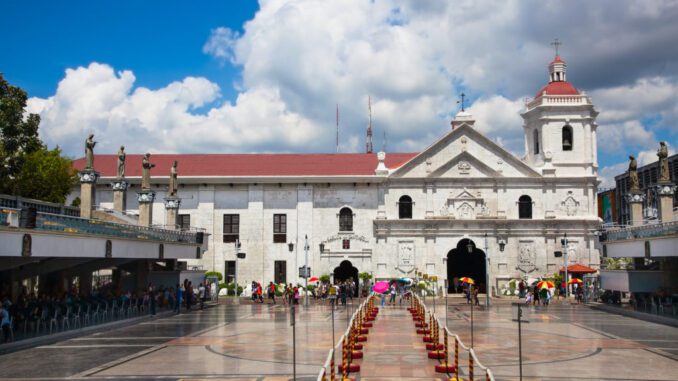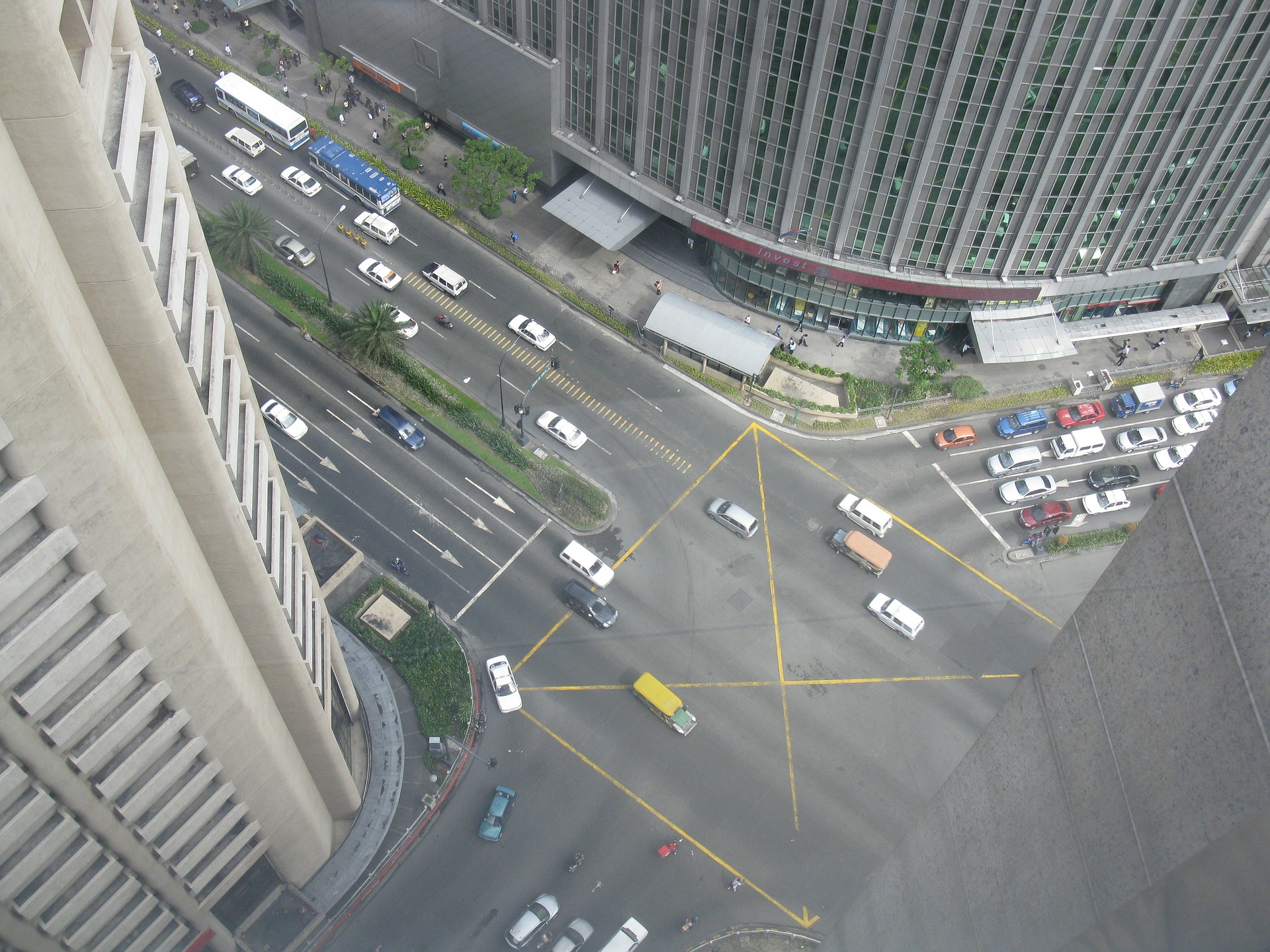
The Basilica Minor del Santo Niño (The Minor Basilica of the Holy Child in English) holds deep cultural significance for the people of Cebu due to the Catholic faith held by the majority of Cebuanos. The church represents the introduction of Christianity to the island and in turn the Christianization of The Philippines.
The Basilica Minor del Santo Niño was first constructed in 1565 by Miguel Lopez de Legaspi and Fr. Andres Urdaneta. It was built on the very site where the statue of the Sto. Nino de Cebu, a statue depicting the Child Jesus, was found in 1565 by Spanish explorers led by Miguel Lopez de Legazpi.
The church still stands to this day, hundreds of years after the construction of the first structure. Despite this, the church has faced its fair share of setbacks over the years.
Rebuilding The Basilica Minor del Santo Niño
The original structure of the church, made from hardwood, mud and nipa burnt to the ground on November 1, 1568. IN 1605 the construction of the church began, again using hardwood and nipa materials. The construction lead by Fr. Pedro Torres continued up until it was finished in 1626.
Unfortunately, due to the nature of the materials used in its construction, the church again burnt down in 1628.
Construction on the church almost began almost immediately. As in 1628 Fr. Juan Medina directed the construction of the church although using stones and bricks as an alternative to the previous materials. This new construction did not last long as issues with the bricks being used began to arise. The bricks began to “melt” when they came in contact with air so construction on the new church was halted.
Thanks to the efforts of Father Provincial Bergano, Governor-General Fernando Valdes, Bishop Manuel Antonio Decio Y Ocampo of Cebu and Juan de Albarran Prior of the Sto. Nino. work on the church once again was underway.
Utilising hewn stone. Fr. Antonio Lopez, the residents of Talisay, and Father Francisco Aballe, together with his parishioners began construction of the church. This work began on February 29, 1735, when Fernándo Valdés y Tamon, the Governor of Cebu, ordered the church to be constructed with hard stone. The church was also to be built on the same site as the previous structures. Construction finally came to an end in 1739.
Significance of The Santo Niño in Cebu
The Santo Niño is a roughly 12-inch high wooden statue of Jesus in his infant form. The statue is believed to have been made in Flanders, Belgium due to its similarities to the Infant Jesus of Prague. The Santo Niño is now considered the oldest religious relic in The Philippines.
The Santo Niño, a representation of Jesus as a black holy child is housed inside the Basilica to this day. The statue is believed to be the same statue given by Portuguese explorer Ferdinand Magellan to Queen Juana back in 1521.
The Santo Niño is now seen as the patron of Cebu. Cebuanos turn to the Santo Niño for strength and guidance within their lives.
When Magellan comes to town
On September 20, 1519, a fleet of five galleons under the command of Portuguese Navigator Ferdinand Magellan at the service of the king and queen of Spain set sail from San Lucar de Barrameda in search of the Spice Islands. Their journey took them to Limasawa, a small island south of Leyte in the central region of The Philippines.
Magellan took possession of the islands and named it The Philipines after King Philip of Spain. Magellans expedition then moved on towards Cebu. Magellan found the island to be very hospitable, which motivated him to make the island his base for exploration, Christianization and conquest.
King Humabon and Queen Juana of Cebu gave him a warm reception as well as embracing the teachings of Christianity. Magellan gave to Queen Juana a gift during the baptism of King Humabon and his wife Queen Juana on April 14, 1521; this gift is believed to be the statue of the Santo Niño housed in The Basilica Minor del Santo Niño today.
“After dinner the priest and some of the others went ashore to baptize the queen, who came with forty women. We conducted her to the platform, and she was made to sit down upon a cushion, and the other women near her, until the priest should be ready.
She was shown an image of our Lady, a very beautiful wooden child Jesus, and a cross. Thereupon, she was overcome with contrition, and asked for baptism amid her tears. We named her Juana, after the emperors mothers; her daughter, the wife of the prince, Catherina; the queen of Mazua, Lisabeta; and the others, each their distinctive name. Counting men, women, and children, we baptized eight hundred souls.
The queen was young and beautiful, and was entirely covered with a white and black cloth. Her mouth and nails were very red, while on her head she wore a large hat of palm leaves in the manner of a parasol, with a crown about it of the same leaves, like the tiara of the pope; and she never goes any place without such a one. She asked us to give her the little child Jesus to keep in place of her idols; and then she went away.”
As gratitude for their hospitality, Magellan agreed to fight along side King Humabon who was at war with the neighbouring tribe in Mactan island. Magellan was killed in the battle. His men then returned to Spain, which happened to be the expedition which set the record as the first to circumnavigate the earth.
Spain sent another expedition into the South East Asian Region. An Augustinian priest, named Andres Urdaneta, a world-known cosmographer who lived inside the monastic walls of the Augustinian monastery in Mexico along with Miguel Lopez de Legaspi, Basque-Spanish navigator and a governor was summoned to lead the expedition. On November 21, a memorable expedition left Mexico for the Philippines and arrived in Cebu on April 27, 1565.
Cebuanos held suspicion that the Spaniard’s return was about bringing retribution to Magellan’s death, another battle broke out. But heavy artilleries and huge cannons forced the natives to flee to the mountain leaving behind their villages burnt to the ground.
As Spanish soldiers surveyed the debris of the village, a soldier, Juan Camus found an image of the Child Jesus under the pile of ashes unscathed inside a wooden box. The burned wooden box left behind during the 1521 Magellan expedition had preserved the Holy Child carving.
The Basilica Minor del Santo Niño in modern times
A replica of the Santo Niño is now found within a side altar at the Basilica; It is enshrined in a glass case adorned with gold and precious stones. Every third Sunday of January, millions will flock to the streets of Cebu in order to celebrate the largest festival of the year.
It is the Sinulog Festival, a colourful celebration in honour of the feast of the Santo Niño, the patron of Cebu. The main attraction of this festival is the street parade which lasts for 9 – 12 hours, with participants coming from different towns and cities across Cebu, occasionally some participants come from a different island.
Even in modern times, the church has continued to face destructive forces. During the last World War, a bomb fell on the church yet the Santo Niño remained intact. The church has also endured various earth quakes, the most significant being in 2013 were the church faced significant damage due to a major earthquake based in Bohol.
he Basilica Complex of Basilica Minore del Santo Niño is located in city block bordered by the Osmena Boulevard, D. Jakosalem Street, P. Burgos Street, and the Plaza Sugbo where the Magellan’s Cross is located. The main entrance is on the Osmena Boulevard. Two blocks to the north of the basilica is the Cebu Metropolitan Cathedral. It is where the Roman Catholic Archdiocese of Cebu seats.
The Basilica currently remains under the care of the Augustinians – The Order of St. Augustine.





Be the first to comment